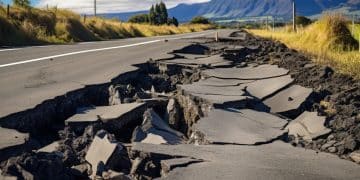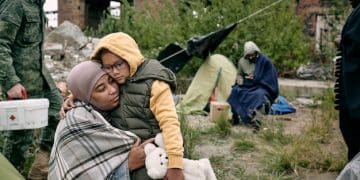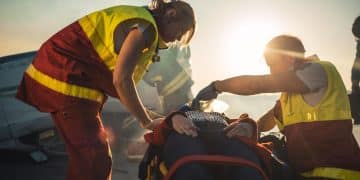Community Resilience: Building Stronger Neighborhoods for Disaster Response in the US
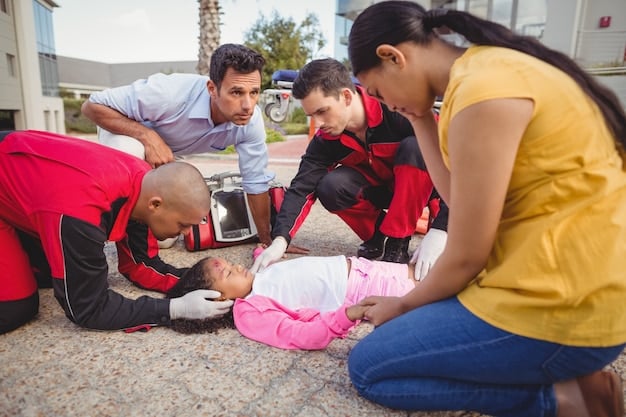
Community resilience in the US involves strengthening neighborhoods through preparedness training, resource sharing, and fostering social connections to enhance their ability to withstand and recover from disasters.
The ability of a community to bounce back from adversity, particularly in the face of disasters, is known as community resilience: building stronger neighborhoods for disaster response in the US. This involves proactive measures, strong social networks, and effective resource management.
Understanding Community Resilience in the US
Community resilience isn’t just about surviving a disaster; it’s about thriving afterward. It’s the ability of a neighborhood to leverage its collective resources and social capital to withstand, adapt to, and recover from adverse situations.
In the US, community resilience is particularly vital due to the increasing frequency and intensity of natural disasters. From hurricanes along the coast to wildfires in the West, neighborhoods face a range of threats that require a coordinated and community-driven response.
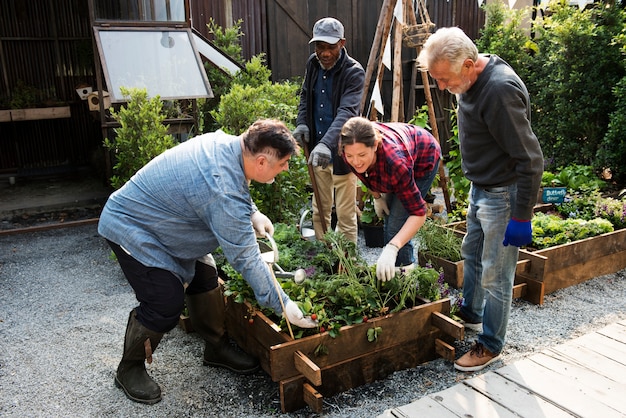
Key Components of Community Resilience
Building resilience requires addressing several key components that enable communities to effectively respond to and recover from disasters:
- Social Capital: The strength of relationships and social networks within a community. Strong social bonds facilitate cooperation and mutual support during crises.
- Preparedness: Having plans, resources, and training in place to mitigate the impact of disasters. This includes emergency kits, evacuation plans, and community-wide drills.
- Infrastructure: Ensuring that critical infrastructure such as power grids, transportation systems, and communication networks are robust and reliable.
- Economic Resources: Access to financial resources and job opportunities that enable individuals and families to recover economically after a disaster.
To foster robust community resilience in the U.S., neighborhoods must actively engage in preparedness planning, cultivate strong social connections, and ensure equitable access to resources and opportunities.
The Role of Social Networks in Disaster Response
Social networks are the backbone of community resilience. These networks provide the support, information, and resources that individuals and families need during and after a disaster.
Strong social connections foster a sense of collective efficacy, empowering residents to take proactive steps to protect themselves and their neighbors.
Building Stronger Social Bonds
Fostering social connections involves creating opportunities for residents to interact and build relationships:
- Community Events: Hosting regular events such as block parties, potlucks, and festivals that bring neighbors together.
- Neighborhood Associations: Participating in local organizations that address community issues and advocate for residents’ needs.
- Volunteer Opportunities: Engaging in volunteer activities that promote community cohesion and mutual support.
Investing in social infrastructure such as community centers, parks, and libraries can also enhance social connections and create spaces for residents to gather and interact, strengthening the social fabric of neighborhoods.
Enhancing Preparedness through Education and Training
Preparedness is a critical element of community resilience. Educating residents about potential hazards and providing them with the skills and knowledge to respond effectively can significantly reduce the impact of disasters.
Preparedness efforts should be tailored to the specific risks and vulnerabilities of each community, taking into account factors such as geographic location, demographics, and socioeconomic conditions.
Effective Preparedness Strategies
Enhancing preparedness involves a multi-faceted approach that includes:
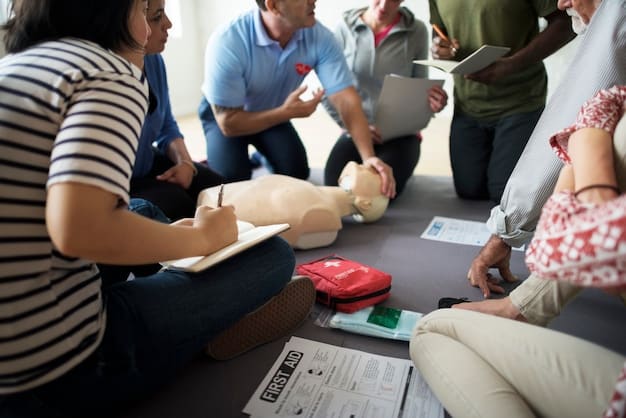
- Emergency Planning: Developing and disseminating emergency plans that outline evacuation routes, shelter locations, and communication protocols.
- Skills Training: Offering training in essential skills such as first aid, CPR, and search and rescue.
- Resource Stockpiling: Encouraging residents to create emergency kits that include food, water, medication, and other essential supplies.
By equipping residents with the knowledge, skills, and resources they need to respond effectively, communities can significantly improve their ability to withstand and recover from disasters, saving lives and minimizing damage.
Leveraging Technology for Community Resilience
Technology plays an increasingly important role in enhancing community resilience. From communication systems to data analytics, technology can help communities prepare for, respond to, and recover from disasters more effectively.
Effective technology deployment requires careful planning and coordination to ensure that systems are accessible, reliable, and user-friendly for all residents.
Technology-Driven Resilience
Technology can be leveraged in various ways to enhance community resilience:
- Emergency Communication Systems: Implementing systems that enable rapid and reliable communication between residents, first responders, and emergency management agencies.
- Data Analytics: Utilizing data analytics to identify vulnerable populations, assess risks, and allocate resources effectively.
- Online Resources: Providing access to online resources such as maps, information portals, and social media groups that facilitate information sharing and coordination during disasters.
By leveraging technology effectively, communities can enhance their situational awareness, improve communication, and facilitate a more coordinated and efficient disaster response, ultimately minimizing the impact of adverse events.
Addressing Vulnerable Populations in Disaster Planning
Vulnerable populations, such as the elderly, low-income individuals, and people with disabilities, often face disproportionate risks during disasters.
Effective disaster planning must address the unique needs and challenges of these populations, ensuring that they have equitable access to resources and support. This might involve prioritizing evacuation assistance, providing language-appropriate information, or establishing accessible shelters.
Strategies for Inclusive Disaster Planning
Addressing the needs of vulnerable populations requires a proactive and inclusive approach:
- Vulnerability Assessments: Conducting assessments to identify the specific vulnerabilities and needs of different populations within the community.
- Targeted Outreach: Implementing outreach programs that specifically target vulnerable populations, providing them with information, resources, and support.
- Accessibility Planning: Ensuring that emergency plans, facilities, and services are accessible to people with disabilities.
Inclusive disaster planning is essential for ensuring that all residents, regardless of their background or circumstances, have the opportunity to survive and recover from disasters.
Policy and Funding for Community Resilience Initiatives
Government policies and funding play a crucial role in supporting community resilience initiatives. Policies that promote preparedness, invest in infrastructure, and address social inequities can significantly enhance a community’s ability to withstand and recover from disasters.
Adequate funding is essential for implementing preparedness programs, upgrading infrastructure, and providing assistance to affected residents. This support should be targeted, ensuring that resources reach those who need them most.
Promoting Resilience through Policy and Funding
Effective policy and funding strategies include:
- Disaster Mitigation Programs: Investing in programs that reduce the risk of disasters, such as flood control projects, wildfire prevention measures, and earthquake retrofitting.
- Community Resilience Grants: Providing grants to local organizations and community groups to implement preparedness and resilience-building projects.
- Social Safety Nets: Strengthening social safety nets such as unemployment insurance, food assistance, and housing assistance to help individuals and families recover economically after a disaster.
By prioritizing community resilience in policy and funding decisions, governments can help create stronger, more resilient neighborhoods that are better equipped to face the challenges of a changing world.
Community resilience involves proactive planning, inclusive engagement, and equitable resource distribution, ensuring every neighborhood member is prepared and supported.
| Key Point | Brief Description |
|---|---|
| 🤝 Social Networks | Strengthen bonds for mutual support. |
| 📚 Education | Provide training in essential skills. |
| 📱 Technology | Use systems for communication and data. |
| 🛡️ Vulnerable Groups | Address unique needs in planning. |
Frequently Asked Questions
▼
Community resilience refers to the ability of a neighborhood to withstand, adapt to, and recover from adverse situations, such as natural disasters and economic shocks, by leveraging its collective resources and social capital.
▼
Community resilience is vital in the US due to the increasing frequency and intensity of natural disasters, which necessitate coordinated and community-driven responses to protect lives and minimize damage across diverse regions.
▼
Social networks enhance community resilience by providing crucial support, information, and resources to individuals and families during and after disasters. Strong bonds promote cooperation and mutual support in crises.
▼
Technology plays a key role by enhancing communication, gathering data, and providing online resources. It enables better coordination and efficient disaster response, improving situational awareness for communities.
▼
Vulnerable populations should be addressed by inclusive planning that identifies their unique needs, provides targeted outreach, and ensures emergency plans and services are accessible, prioritizing those facing disproportionate risks.
Conclusion
In conclusion, building community resilience: building stronger neighborhoods for disaster response in the US is a multifaceted effort that requires proactive planning, strong social networks, effective preparedness strategies, and inclusive policies. By investing in these areas, communities can enhance their ability to withstand and recover from disasters, creating a safer and more resilient future for all residents.

